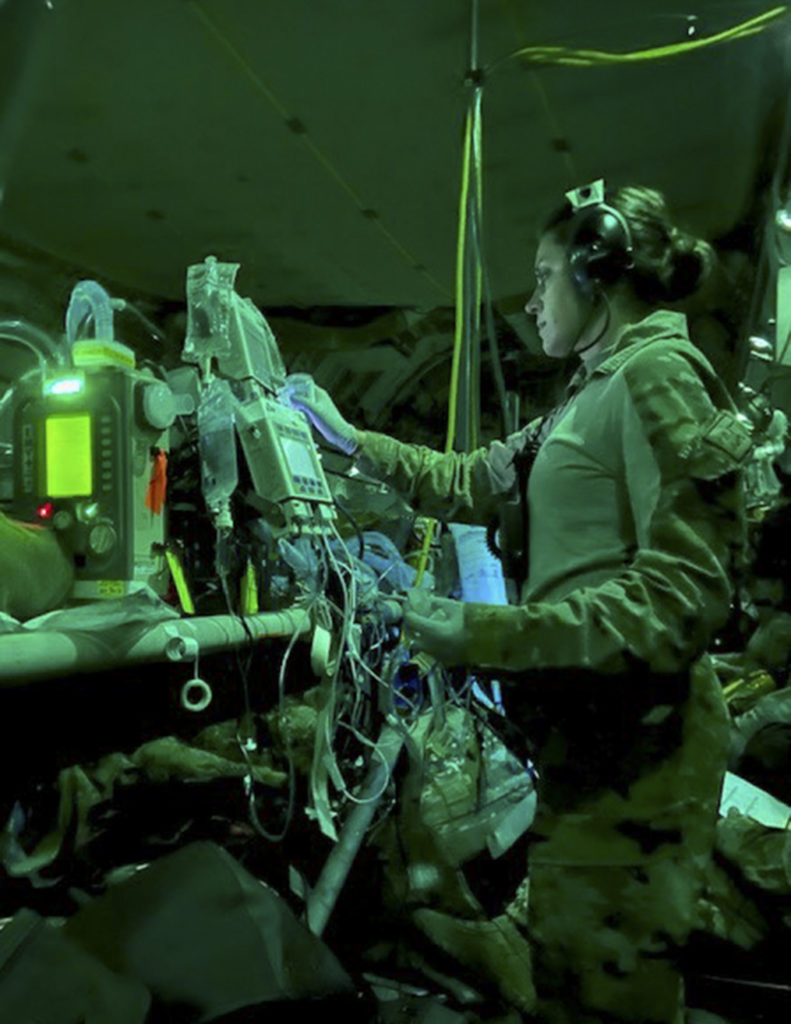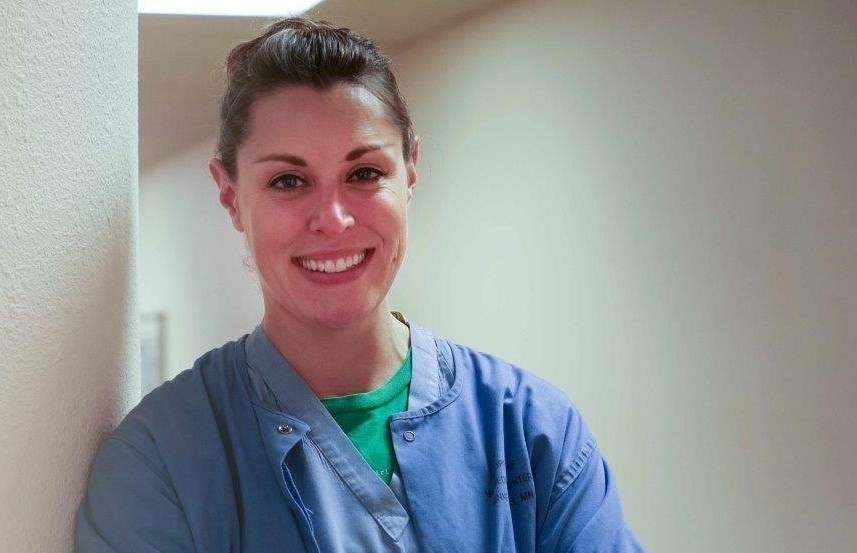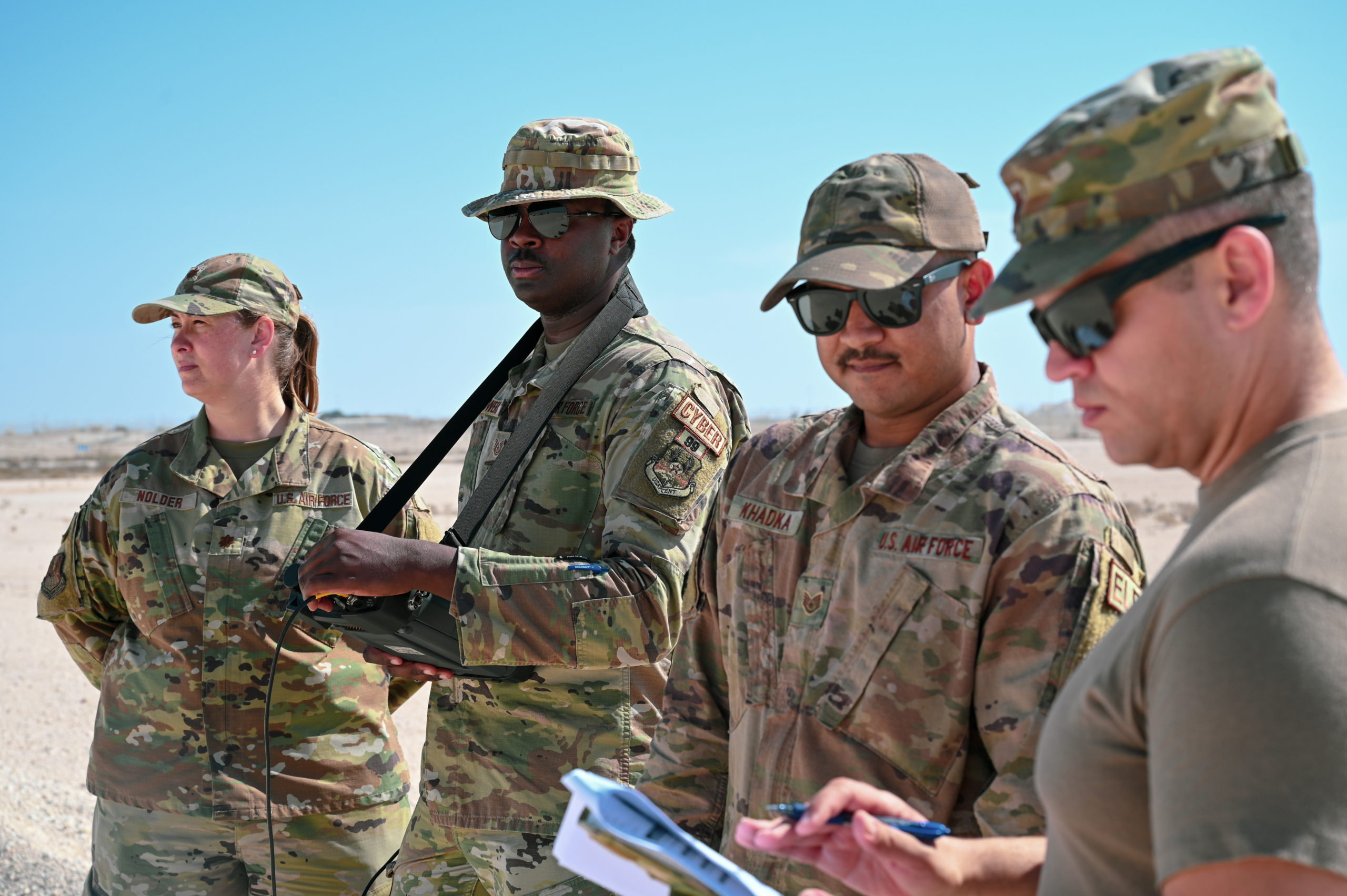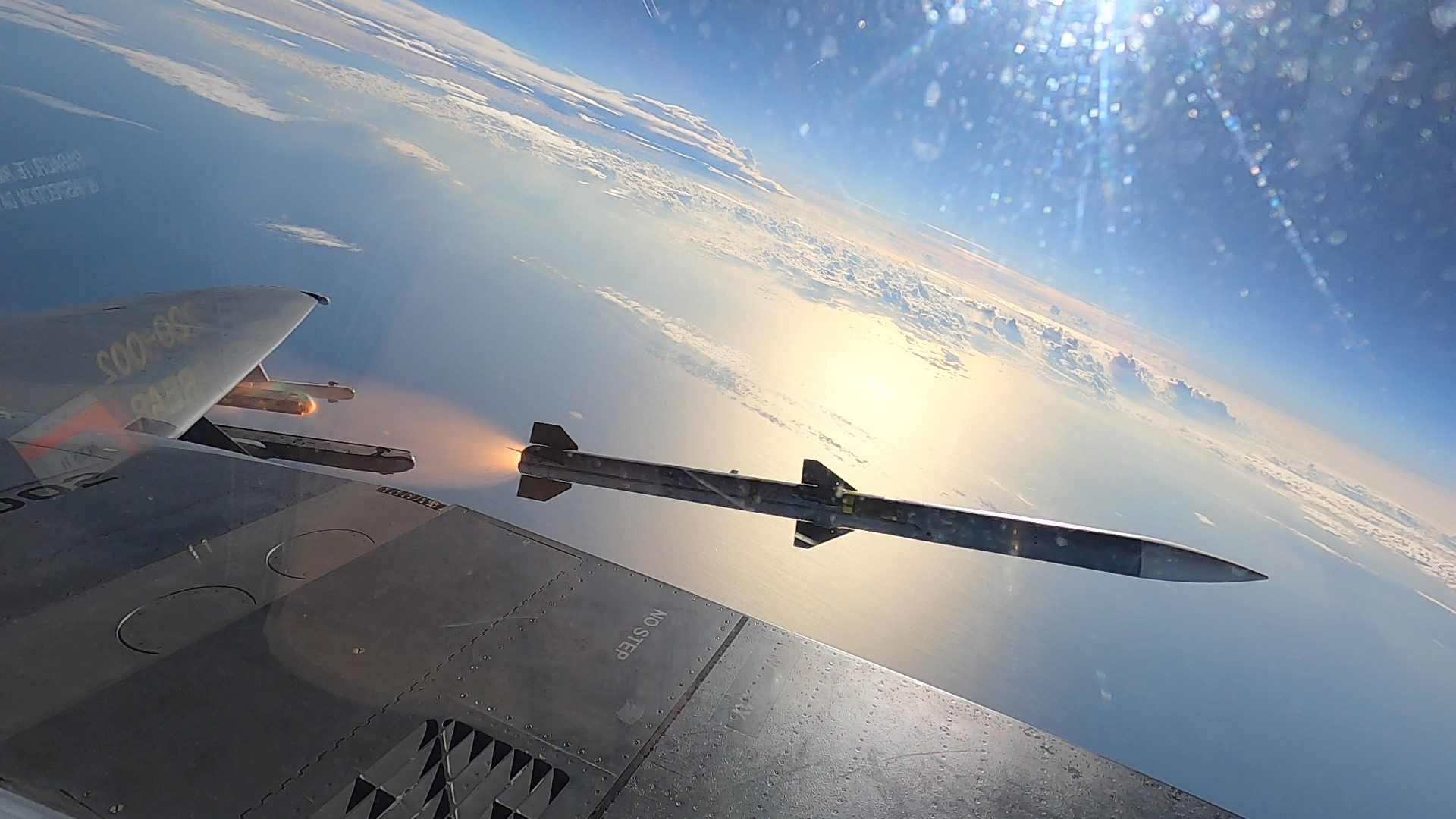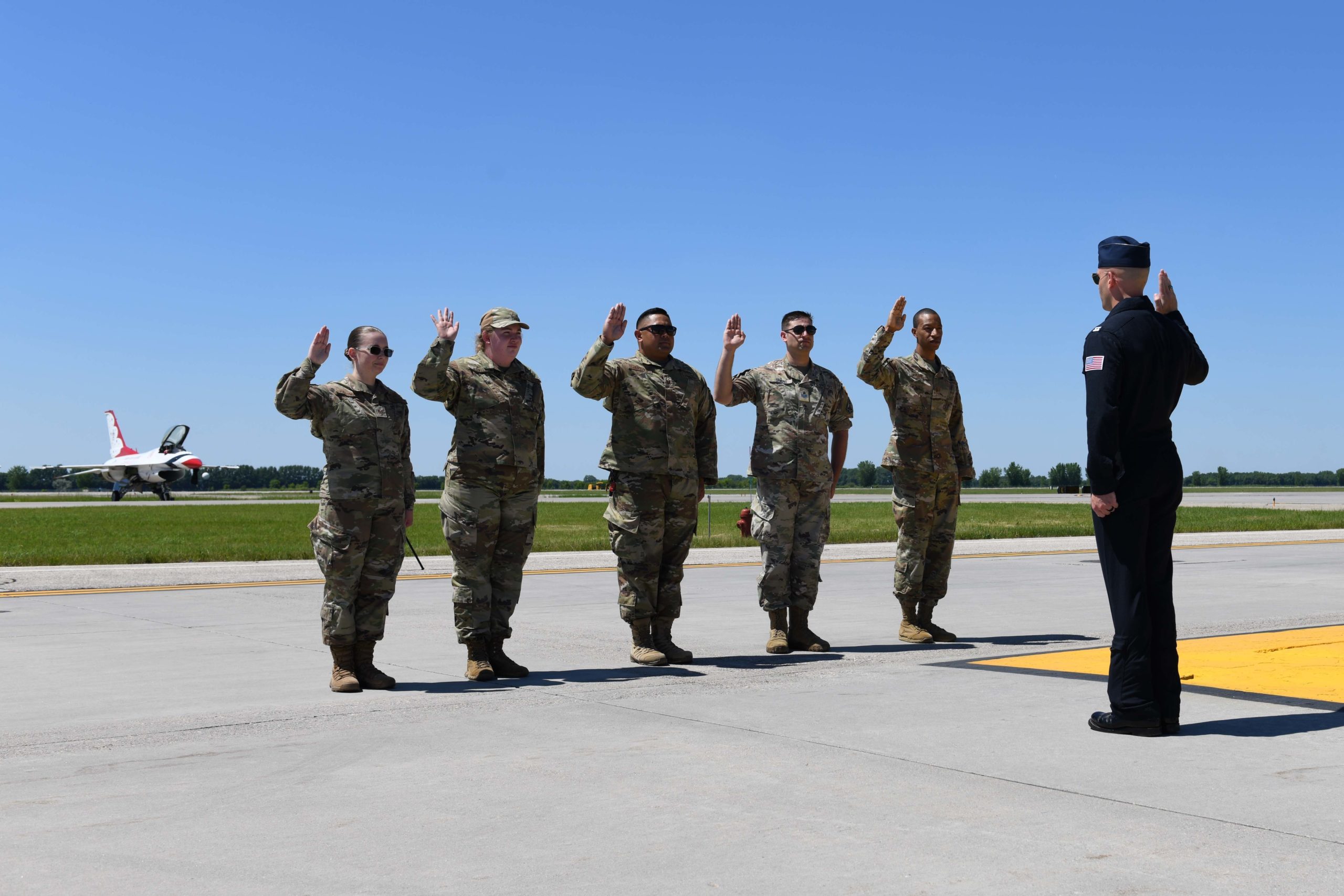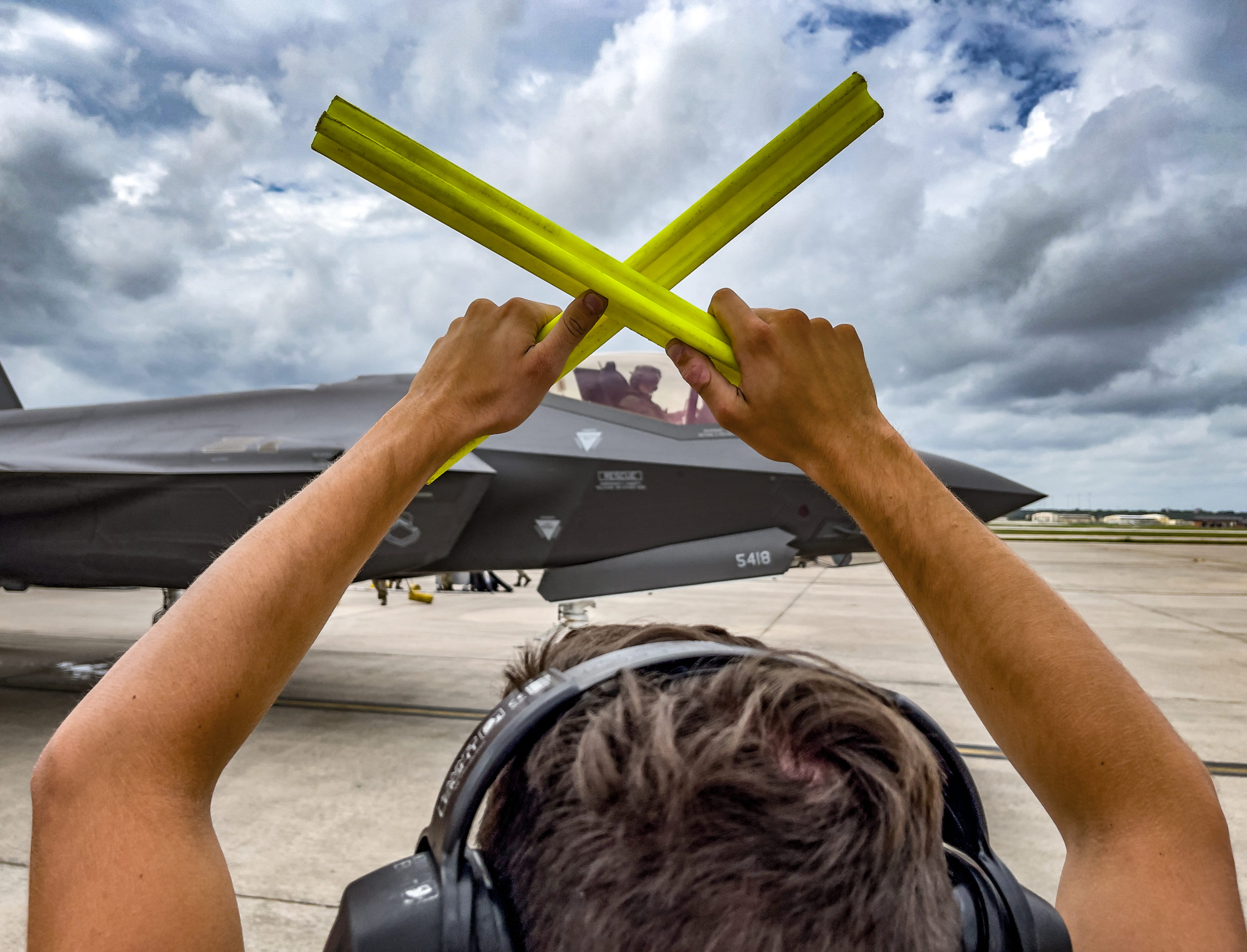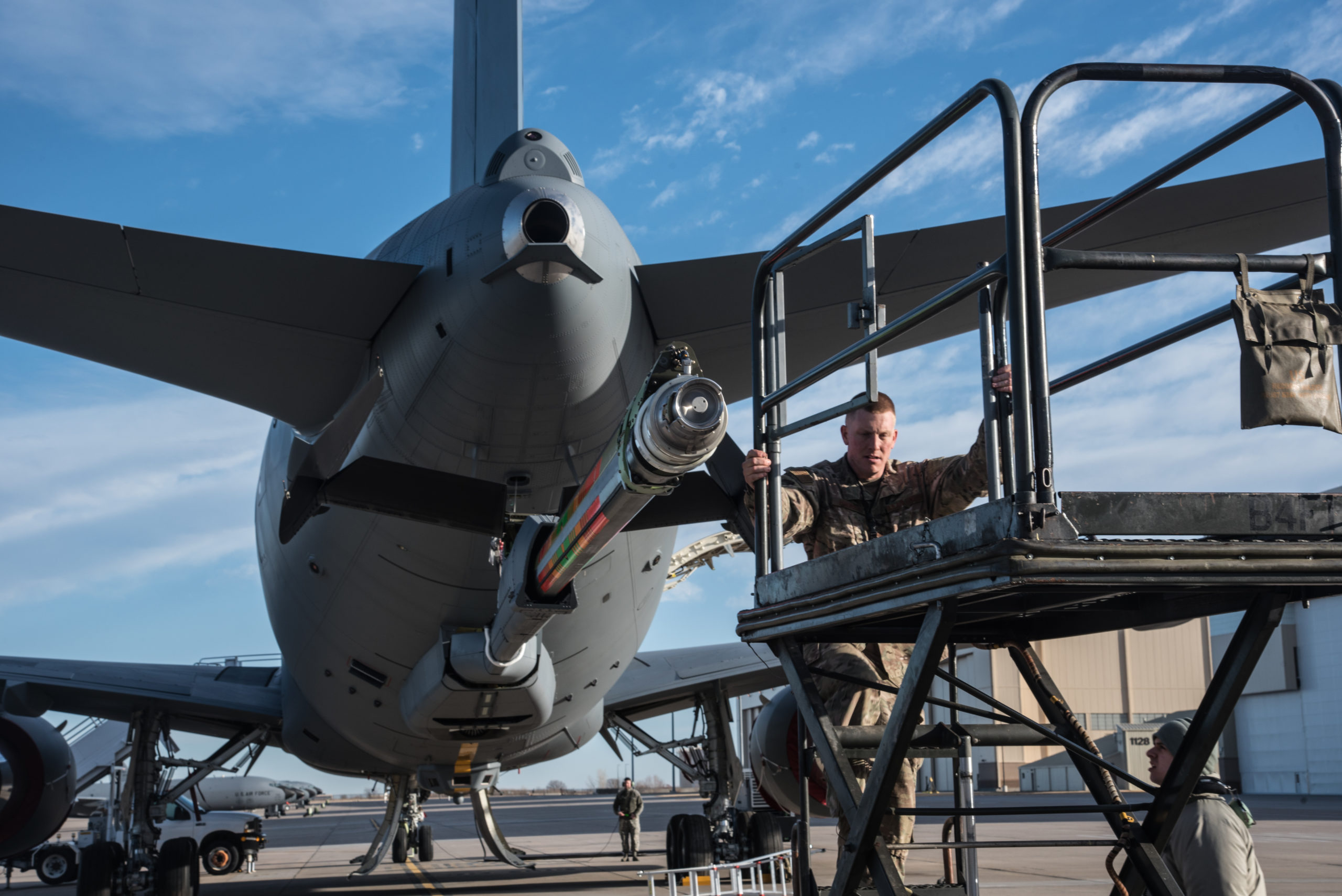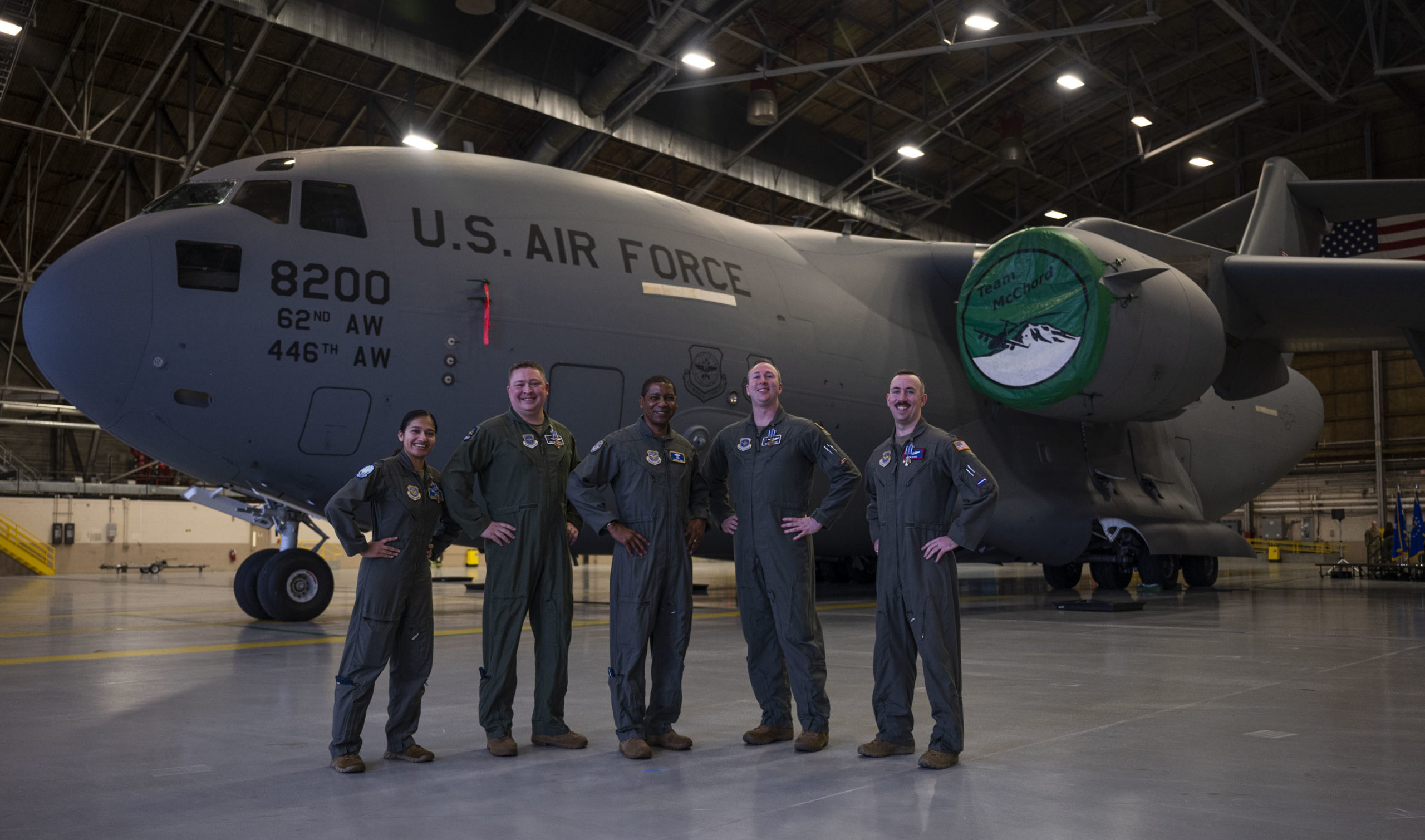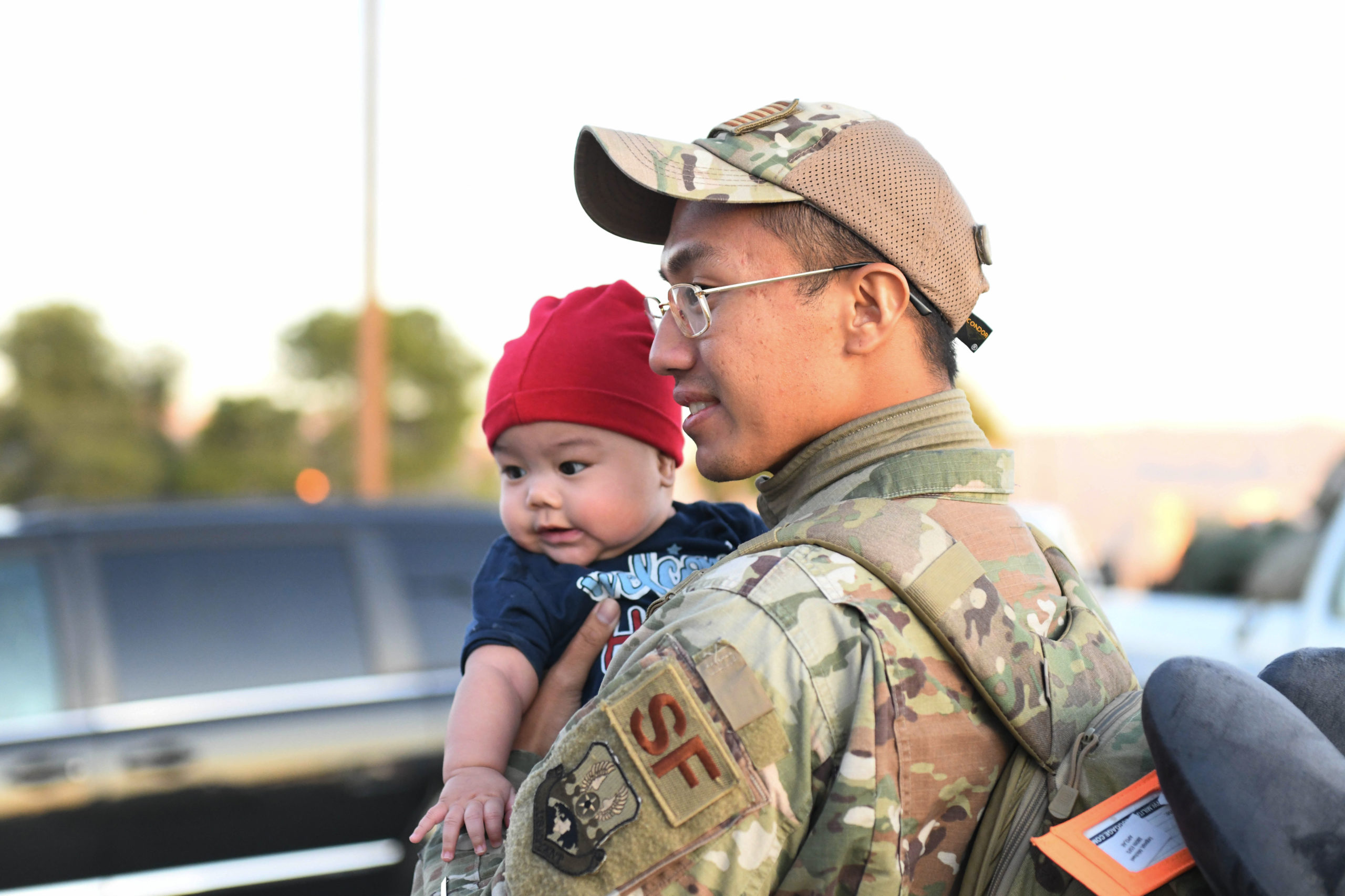A Minnesota Air National Guard flight nurse who responded to a deadly suicide bombing in the midst of the Afghanistan evacuation in August 2021 is set to receive the Distinguished Flying Cross on Jan. 7.
Maj. Katie Lunning of the 133rd Airlift Wing will be the first Air National Guard nurse ever to be awarded the DFC, the military’s fourth-highest award for heroism.
Lunning was a captain deployed to Al Udeid Air Base, Qatar, when the noncombatant evacuation from Kabul, Afghanistan, began. The mission resuced thousands of Afghan civilians, foreign nationals, and U.S. personnel fleeing the advancing Taliban as the Afghan government collapsed. Lunning and her team at Al Udeid set up a ground aid station and helped treat the flow of civilians arriving in Qatar, according to an Air Force release from November 2021. But it wasn’t long before Lunning and her CCATT teammates were mobilized to fly to Kabul on a C-17.
“We didn’t know what to expect,” she said in the release. “On the flights to Kabul, we were wearing protective helmets and vests. The intelligence brief was concerning, and you could feel that everyone was on alert.”
They arrived Aug. 26 in Kabul, the same day a suicide bomb killed 13 U.S. service members and dozens of Afghans, and injuring hundreds of others.
“We were pulling them out as they are getting injured. … We were the first CCATT in,” Lunning recalled in a Jan. 3 press release. “It was the largest medical evacuation out of that coalition hospital ever, and very dangerous on the ground. We had to leave the airplane to go get our patients…. We took injured Marines and Afghan civilians who really weren’t flight worthy, but there was no choice. We just had to get them out of there. So, a lot of medical events occurred on the airplane, but we ended up being able to safely deliver everybody to Landstuhl, Germany [for further medical care].”
A few days later, Lunning was on the last convoy of C-17s to fly out of Afghanistan, officially ending the U.S. presence there.
Air Force leaders have praised Lunning and other CCATT medical professionals for their work during the Afghanistan evacuation, when they created “flying hospitals” to treat sick and wounded Afghans, delivered babies en route, and treated life-threatening injuries. A number of other medical professionals have been honored with the Distinguished Flying Cross in recent months, as Air Mobility Command and the Air National Guard honor Airmen involved in the operation, but Lunning is the first Guard flight nurse among them.
The entire crew of MOOSE 98, a C-17 flight that brought in a critical care air transport team on Aug. 26, was honored at Travis Air Force Base, Calif., in December.
Tech. Sgt. Katherine Rosa Orellana, a critical care and trauma team respiratory therapist who also responded to the suicide bombing was decorated by Air Force Chief of Staff Gen. Charles Q. Brown Jr. In November.
Capt. Jedd Dillman, a flight nurse, and Master Sgt. Matthew Newman, a respiratory therapist, were the first aeromedical evacuation Airmen in AMC history to receive the DFC. And Capt. Leslie Green, also a flight nurse, received the award at Joint Base Charleston, S.C.
Including Lunning, the Air Force has now awarded 99 Distinguished Flying Cross medals for actions during the Afghanistan airlift mission.
